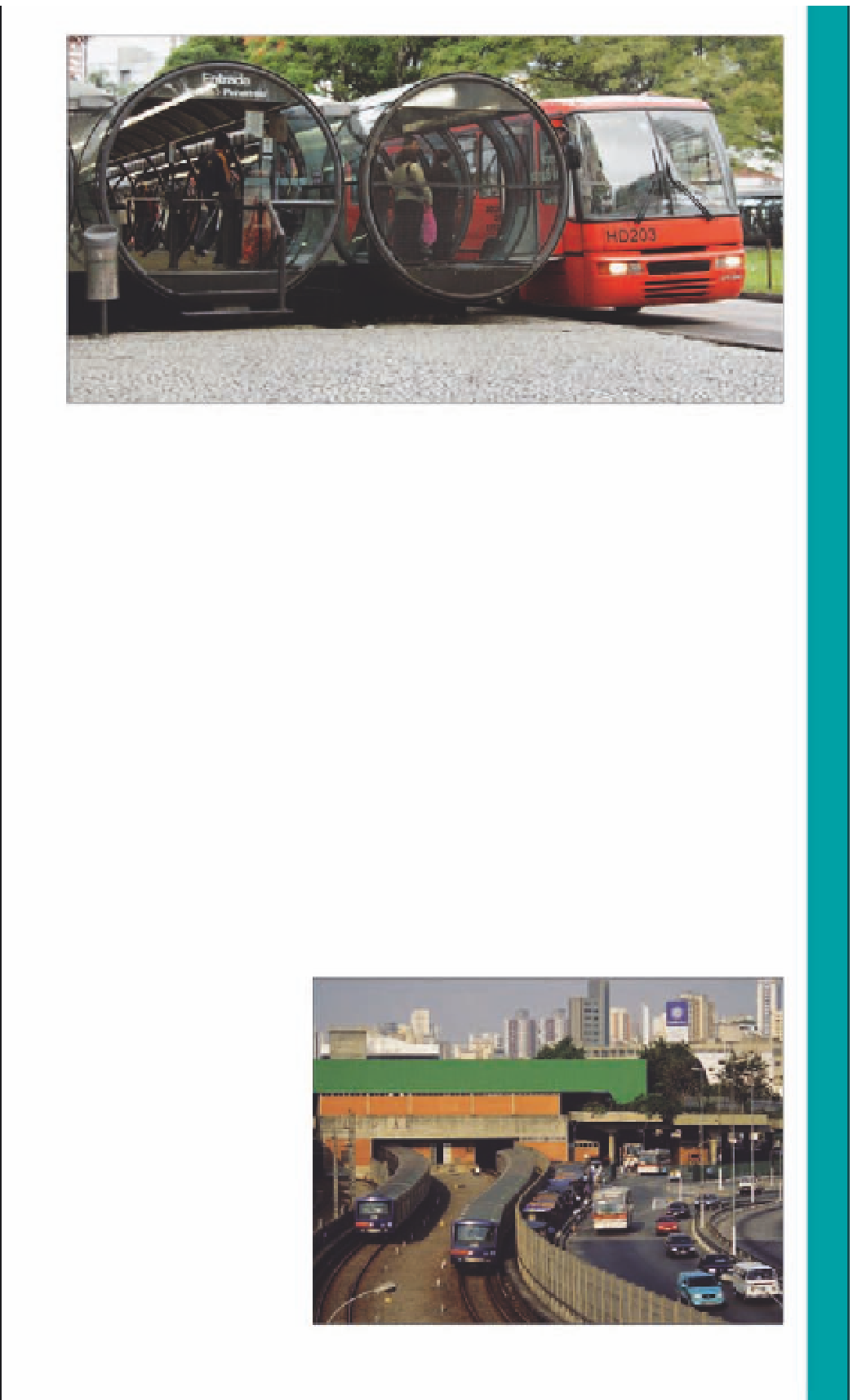Travel Reference
In-Depth Information
Passengers waiting to board the bus at a city bus stand in Paraná
interesting sites. It is much
easier and faster to take the
metro to the stop closest
to your destination and then
take a taxi, rather than figure
out a complicated and often
slow bus system.
In Rio de Janeiro, the metro
runs from 5am to midnight
Monday through Saturday,
and from 7am to 11pm on
Sundays and holidays. During
Carnaval, the metro runs non-
stop for the five days of the
festival. The metro has two
main lines, both of which
are clean and safe, even in
the evenings. The main line
from Siqueira Campos in
Copacabana to Sãens Peña
has 17 stops. The line splits
at Estácio, with one line
continuing west, while the
secondary line goes north
to São Cristóvão and beyond.
The stops of most interest
to visitors are downtown
and along the southern
beach neighborhoods, as well
as the first few stops along
the northern line to the
Maracanã Stadium and Boã
Vista Palace. Rio's metro now
also offers a series of integ-
rated metro-bus routes, which
offer connections on air-
conditioned buses to many
of the city's attractions that
are off the metro system, such
as Santa Teresa, Sugar Loaf,
and Ipanema. Passengers
must request a special inte-
grated ticket (
integração
) at
the time of purchase.
São Paulo's metro system
covers quite a large part
of the city. It runs from
4:40am to midnight on all
days of the week and is
also clean, efficient, and
safer than the buses.
For both systems, one-way
(
unitário
), round-trip (
duplo
),
or 10-ride (
múltiplo
) tickets
are available. However, no
discounts are offered for
multiple-ride tickets. Transfers
between lines are allowed.
Free metro maps are available
at most ticket booths of both
metro systems.
In Rio, most buses going from
the south to the center will go
to Copacabana. Keep in mind
that buses are often crowded,
and get stuck in terrible time-
consuming traffic snarls. They
are also often the sites of
many of the city's robberies.
To avoid pickpockets, try to
sit at the front of the bus.
In São Paulo, a couple of
the main bus transfer points
are at Praça da Republica and
the busy Terminal Bandeira,
where it is also possible to
catch different buses to far-off
destinations within the city.
Tickets are sold on the bus
by a ticket-seller who sits at a
turnstile. Keep small change
handy. Brazilian bus drivers
can drive fast, so hold on at
all times and be alert for
sudden stops when standing.
It is safer to take buses in the
daytime. In the evenings, it is
advisable to take taxis.
BUSES
Buses are plentiful in the big
cities. Most buses list their
destination in large letters on
their front window, while
another sign with smaller
lettering lists key landmarks
along the route. Buses in Rio
and São Paulo run 24 hours a
day, but with fewer circulating
in the middle of the night.
São Paulo Metro arriving in the Barra Funda station

































